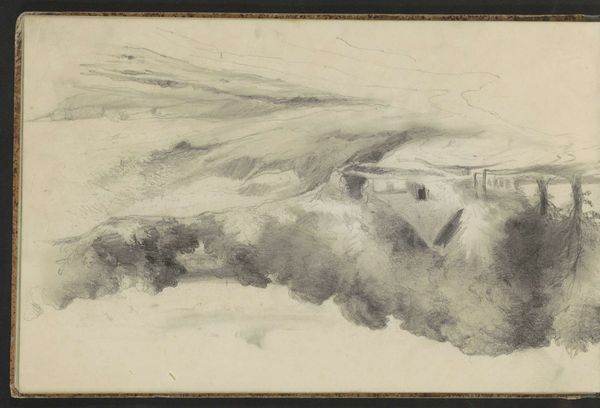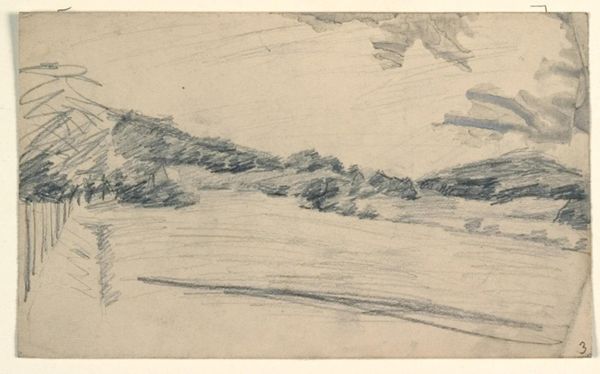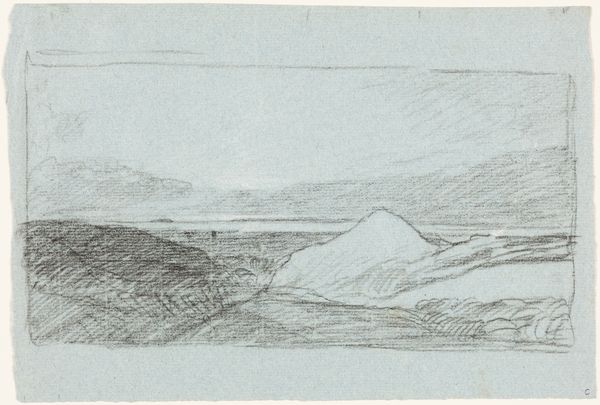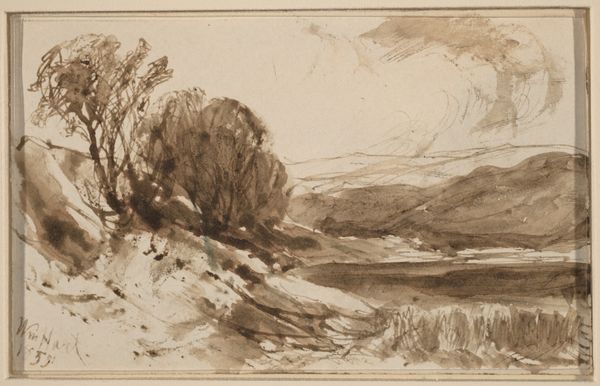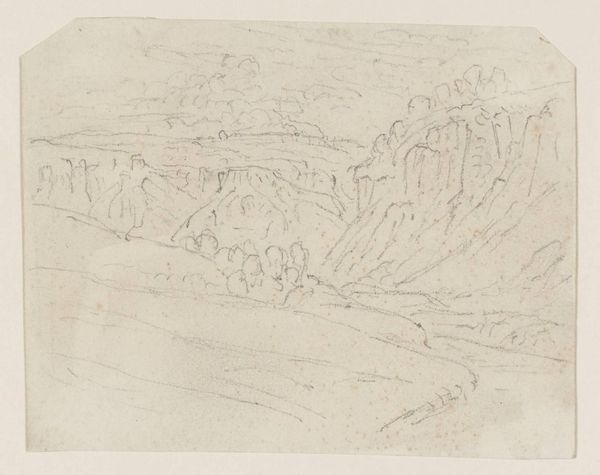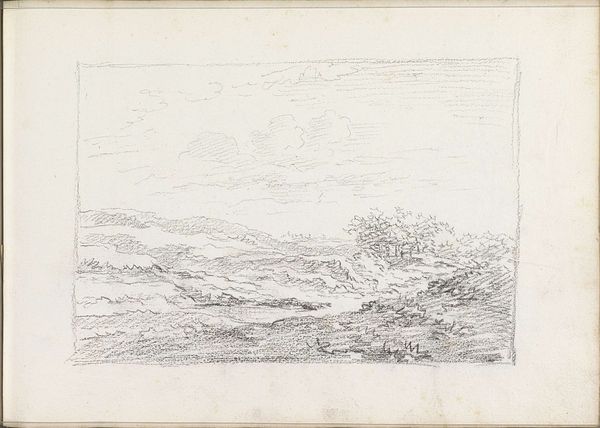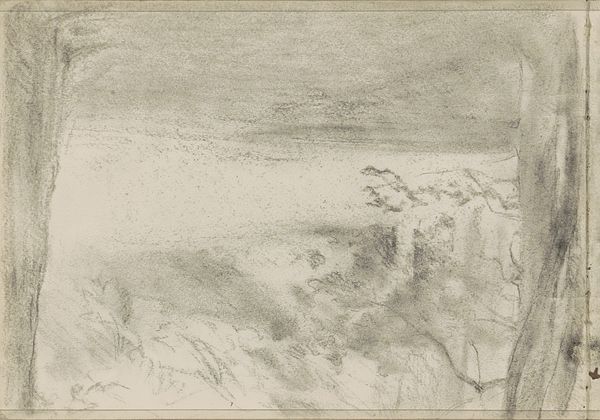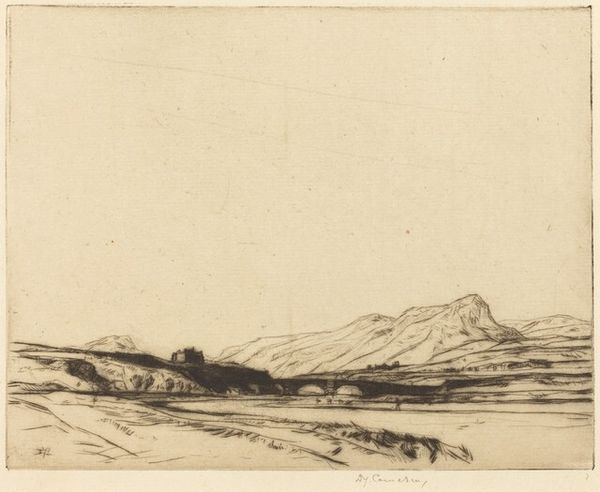
drawing, pencil
#
pencil drawn
#
drawing
#
impressionism
#
pencil sketch
#
landscape
#
charcoal drawing
#
pencil drawing
#
pencil
#
pencil work
#
realism
Dimensions: height 141 mm, width 228 mm
Copyright: Rijks Museum: Open Domain
Curator: Welcome. Here we have Anton Mauve's "Heuvelachtig landschap," which translates to "Hilly Landscape," created sometime between 1848 and 1888. It's a work rendered in pencil, currently residing at the Rijksmuseum. What are your first impressions? Editor: It feels… melancholic. The sepia tones wash over everything, lending a quiet stillness to the rolling hills. I see the house nestled into the landscape like a secret. A place of refuge maybe, but definitely remote. Curator: Indeed. Mauve's focus seems directed toward capturing the textures and topography using only pencil. Notice how varied the strokes are. Light feathery touches build the distant hills, while sharper, darker lines define the foreground. This deliberate application emphasizes the materiality of the pencil and the paper, drawing attention to the labor inherent in its creation. Editor: The repetitive diagonal strokes almost have an archetypal feel. Are we supposed to imagine a pre-industrial scene? There is something nostalgic in that simple house partially hidden. It's an almost universal symbol of shelter. A sort of archetype of protection in a somewhat challenging environment. Curator: Precisely. He likely aimed to represent the simple, rural life of the Dutch countryside. Consider the cultural context; industrialization was rapidly changing the landscape, threatening these traditional ways of life. Editor: I wonder about Mauve’s choice of vantage point, too. We’re not on top of the hill, but slightly below, looking up. Submitting in a way to this rather dominant natural landscape. Almost as if he's placing the viewer within a community that understands their small role in it all. Curator: The sketch is deceptively simple. It invites contemplation on humanity’s relationship to the land and the materials we use to depict it. It is important to remember Mauve was a part of the Hague School so a lot of their output included landscapes featuring, most frequently, agricultural settings. Editor: And that is what gives it such universal, timeless appeal. Seeing how a humble tool and material can still conjure strong feelings and recognizable imagery is fascinating. I definitely read into the context of simplicity, so hearing about Hague School resonates. Curator: The dialogue between technique and image is so prevalent. I will not see the landscape as simply melancholic again. Editor: A cultural memento told from within it is more fascinating.
Comments
No comments
Be the first to comment and join the conversation on the ultimate creative platform.

